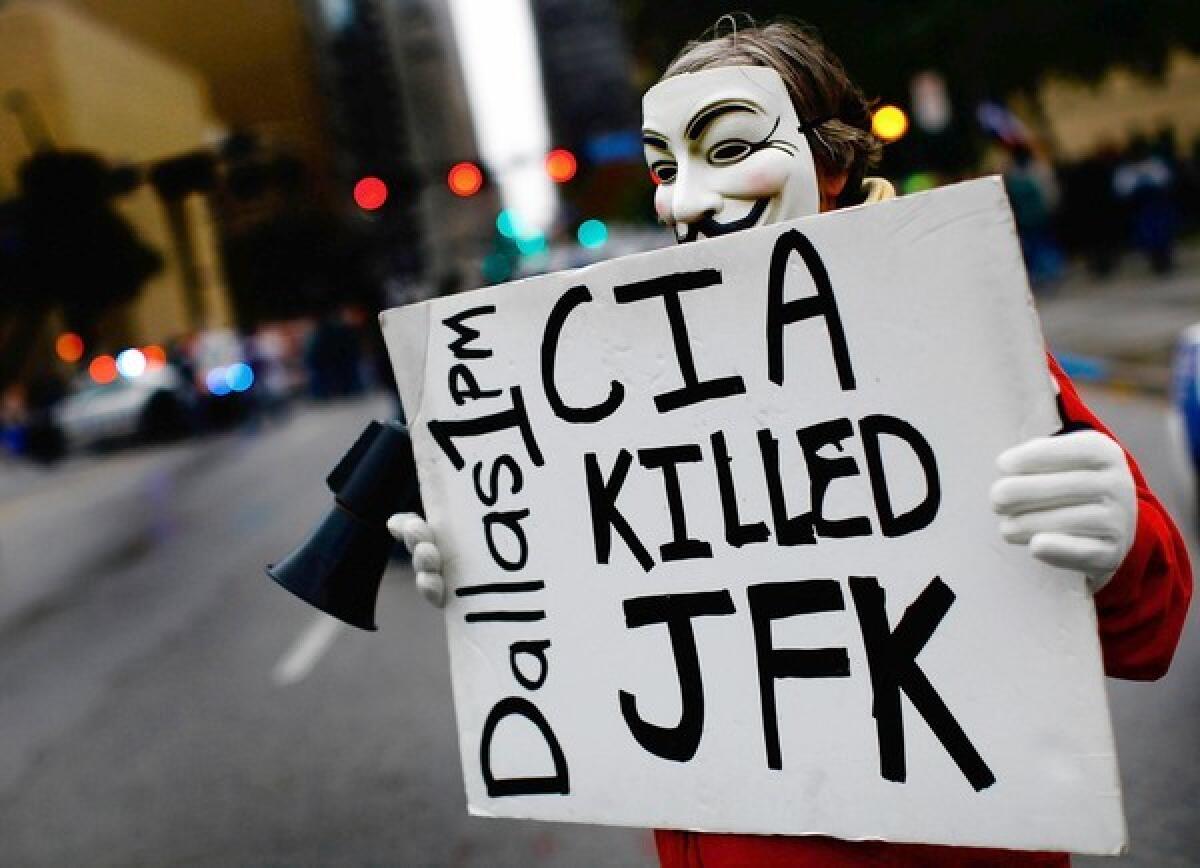Facts or conspiracies?

- Share via
Almost all of the readers who responded to Michael Shermer’s Op-Ed article Tuesday didn’t buy his idea that psychology helps to explain why JFK assassination theories persist. Reader Stephany Yablow of North Hollywood wrote:
“J. Edgar Hoover came up with the lone-gunman scenario within 24 hours of the assassination as a coverup. Lyndon Johnson backed it, demanding that the case be closed quickly.
“The Warren Commission was political window dressing. It failed to thoroughly investigate, interview witnesses and experts and conduct forensic studies. It produced a shallow report.
“Maybe people would believe the lone-gunman theory if Jack Ruby didn’t waltz into the jail and kill Lee Harvey Oswald. There was no reason for Ruby to have unilaterally decided to kill Oswald; hence, the theory that someone directed Ruby to do so. There must have been at least two people (the requisite number of actors to define a ‘conspiracy’). If the lone-gunman proponents had a better answer, they haven’t convinced us yet.”
Michael Shermer responds:
The Warren Commission report was shallow? At 889 pages, I wonder what would be considered deep.
In any case, five different government investigations — along with countless private inquiries — have concluded that the evidence overwhelmingly points to Oswald as the lone assassin.
Oswald’s Carcano rifle with his fingerprints on it was found on the sixth floor of the Texas School Book Depository building. Three bullet casings there match what 80% of eyewitnesses in Dealey Plaza reported hearing: three shots. It was the same rifle Oswald purchased in March 1963, which he then used the following month in an attempt to assassinate the rabidly anti-communist Army Maj. Gen. Edwin Walker (Oswald attempted to defect to the Soviet Union in 1959).
Co-workers saw Oswald on the sixth floor of the depository shortly before JFK’s motorcade arrived, and saw him exit soon after the assassination. Oswald went home and picked up his pistol and left again, shortly after which he was stopped by Dallas Police Officer J.D. Tippit, whom Oswald shot dead with four bullets. He then ducked into a nearby theater without paying, which resulted in a police confrontation. After he attempted to shoot an officer and was arrested, he said, “It’s all over now.”
Two days later, Oswald was himself assassinated by a pro-Kennedy nightclub owner named Jack Ruby, who said his motive was “saving Mrs. Kennedy the discomfiture of coming back to trial.” Thousands more pieces of evidence all converge to the unmistakable conclusion that Oswald acted alone.
In the 50 years since, conspiracy fabulists have concocted more than 300 different people and organizations allegedly involved in the assassination, and yet not one line of evidence conclusively supports any of these suspects. It’s time to move on and let JFK R.I.P.
ALSO:
Letters: A fresh approach to recidivism
Letters: Progressives’ view of Obamacare
Letters: Legal derailment of the bullet train
More to Read
A cure for the common opinion
Get thought-provoking perspectives with our weekly newsletter.
You may occasionally receive promotional content from the Los Angeles Times.









